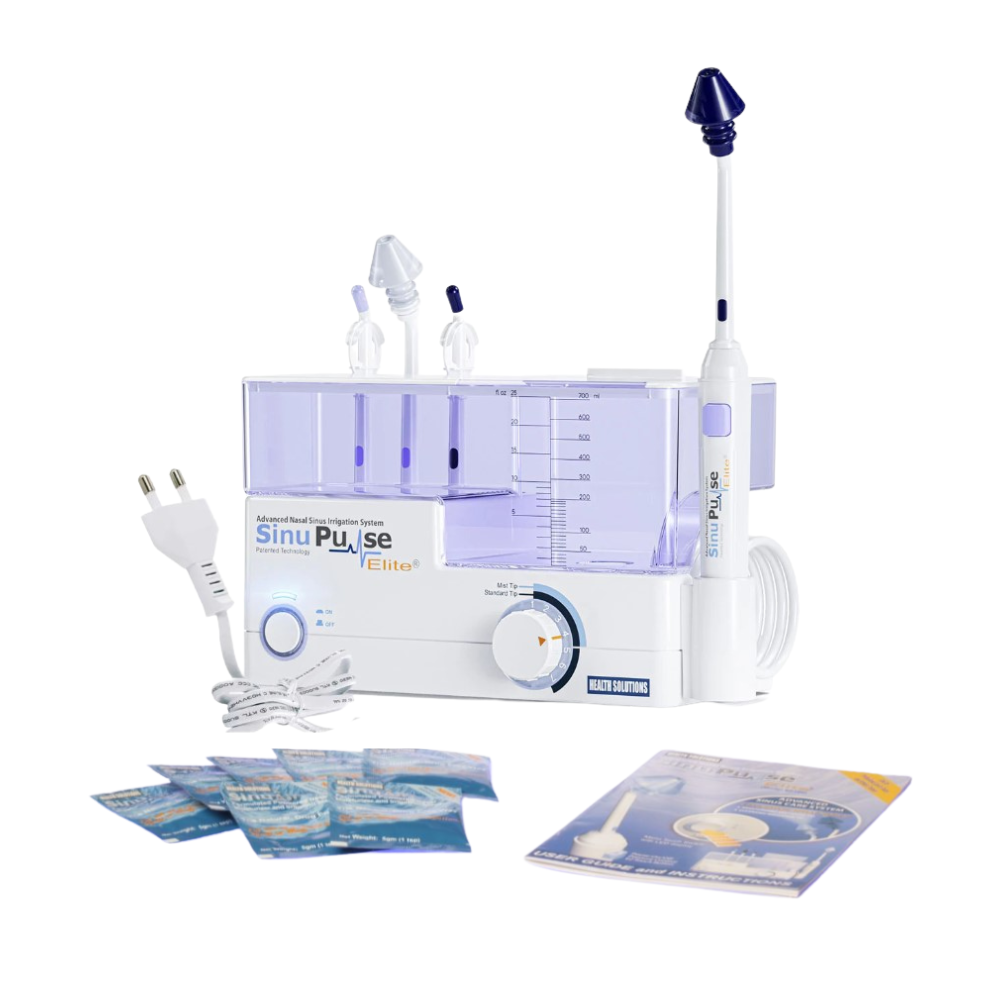Post-Nasal Drip
What is post-nasal drip?
Post Nasal Drip (PND) is a condition caused by excessive mucus in the back of the throat and nasal passages. As the mucus drains down the back of the throat, it can lead to a variety of symptoms.
The symptoms of post-nasal drip (PND) can vary from person to person. Individuals may categorise them differently based on their tolerance and perception of discomfort. However, generally, the symptoms of PND can range from annoying and uncomfortable to painful, depending on the severity.
In this article, we will look at the causes and symptoms of PND as well as the effects on your quality of life. We will also explore the possible treatment options, including the benefits of sinus irrigation.
Post Nasal Drip Symptoms
- Constant Throat Clearing: Individuals with PND often feel the need to clear their throat frequently. This may be accompanied by the sensation of a lump in the throat and this may persist, leading to constant throat clearing.
- Coughing: A persistent cough is a common symptom of PND. The cough may be dry or produce phlegm, and it often worsens at night, disrupting sleep.
- Sore Throat: The constant presence of thick mucus in the throat can lead to irritation and a sore throat. The throat may feel scratchy or raw due to the continuous contact with mucus.
- Nasal Congestion or Runny Nose: Excessive mucus production in the nasal passages can result in nasal congestion or a runny nose. This nasal involvement is often part of the overall post nasal drip syndrome.
- Difficulty Swallowing: Some individuals may experience difficulty swallowing, known as dysphagia. The sensation of a lump or something stuck in the throat can make swallowing uncomfortable.
- Bad Breath: The accumulation of mucus in the back of the throat can contribute to bad breath. Chronic bad breath, also known as halitosis, is a potential consequence of PND.
- Ear Fullness or Discomfort: Mucus drainage can affect the Eustachian tubes, leading to a feeling of fullness or discomfort in the ears. This may contribute to mild hearing impairment or a sense of pressure in the ears.
- Worsening of Asthma Symptoms: For individuals with asthma, PND can exacerbate asthma symptoms. Coughing and wheezing may increase in frequency and intensity.
- Hoarseness or Voice Changes: Irritation from the constant presence of mucus can affect the vocal cords, leading to hoarseness or changes in the voice.
- Nausea: Some individuals may experience a sensation of nausea, especially if excess mucus triggers a gag reflex.
What is the main cause of post-nasal drip?
Post-nasal drip can be caused by a number of factors, including allergies, changes in weather, viral infections (the common cold or flu), and sinus infections.
The underlying cause can influence the specific symptoms experienced.
Post Nasal Drip Treatment
If you want to know how to stop post nasal drip, there are home remedies and over-the-counter treatments available. These are among the most common ways to stop PND.
- Nasal Saline Irrigation: Rinsing the nasal passages with a saline solution can help remove excess mucus and reduce irritation. This is a simple and effective home remedy.Over-the-Counter Decongestants: Medications like pseudoephedrine can reduce nasal congestion.
- Antihistamines: If allergies contribute to PND, antihistamines can be beneficial.
- Prescription Medications: In severe cases, nasal corticosteroids or prescription decongestants may be recommended.
- Lifestyle Changes: Staying hydrated, using a humidifier, and avoiding irritants can help manage symptoms.
- Washing your hands: Washing hands is not a direct treatment for Post Nasal Drip (PND) itself, but it helps reduce infection. Frequent washing reduces the risk of irritants and pollutants being transferred to the face, nasal cavity and mouth.
Benefits of Nasal or Sinus Irrigation:
Nasal irrigation, also known as net, flushes out your sinuses and nasal passages, removing blockages, reducing swelling and inflammation, and quickly reducing or eliminating your symptoms. The benefits of this treatment include:
Clears Mucus: It helps flush out mucus, reducing its accumulation in the throat.
Relieves Symptoms: Regular irrigation can alleviate nasal congestion and throat discomfort.
Hydration: Saline solutions keep nasal passages moisturized, promoting overall nasal health.
Reduces Inflammation: Irrigation can help reduce nasal inflammation, improving breathing.
Non-Drug Approach: It is a non-pharmacological option with minimal side effects.
One of the best forms of irrigation is by using the simple SinuPulse Elite Nasal Irrigator, removing your discomfort in minutes. The device uses a natural drug-free saline solution to deliver you a gentle water flow or mist at a pressure you control to help relieve symptoms.
Why use nasal irrigation treatment?
Regular sinus irrigation will keep your nasal passages and sinuses clear, moisturised and healthy. Not only does it flush out bacteria and viruses once you have an infection, but it also removes them before they have a chance to enter your system.
Dry, inflamed nasal passages are more susceptible to infection and viruses. Keeping them clear, healthy and moisturised gives you the best chance of avoiding sinusitis and other illnesses such as the common cold and flu.
Neti pots (neti) or nasal irrigation is the only proven method of treating post-nasal drip that has no unwanted side-effects. Most GPs will prescribe a course of antibiotics, but while they can help deal with your PND they also increase the likelihood of it happening again.
Part of the body’s natural defence is so-called “good bacteria”, that you body relies on to fight harmful bacteria. Antibiotics kill both the harmful bacteria, and also the good bacteria. This means that it is likely to cure your PND, but leaves you open for it to return again shortly afterwards.
Other medication, such as paracetamol, ibuprofen or cough syrup, will reduce the symptoms of post-nasal drip but do not treat the root cause of the problem – they simply mask it temporarily.
It not only reduces the symptoms, but helps to remove the bacteria causing your post-nasal drip it provides instant relief but also long-lasting protection.

Why choose the SinuPulse Elite Nasal Irrigator?
The key to the SinuPulse Elite is its pulsating mechanism, which helps stimulate the body’s in-built ciliary flow. The cilia are designed to prevent blockages and keep your airways free. If the nose is congested, the cilia cannot work effectively.
The SinuPulse clears out blockages, and stimulates the cilia back into action, ensuring both a comprehensive irrigation and long-lasting relief.
The SinuPulse Elite now comes supplied with a month’s supply of SinuAir – a 100% natural saline solution. In addition, the SinuPulse Elite has a unique spray tip. Once irrigation is complete, you can use the spray tip to gently moisturise your nasal passages and infiltrate areas that are hard to reach.
UK next-day delivery available
If you are buying the SinuPulse for personal use and suffer from chronic sinus problems then you are eligible to purchase it without paying tax. You do not need a prescription or diagnosis, you simply have to tick a declaration during the checkout process that confirms that this is the case and you are then able to get your sinus relief VAT-free.
